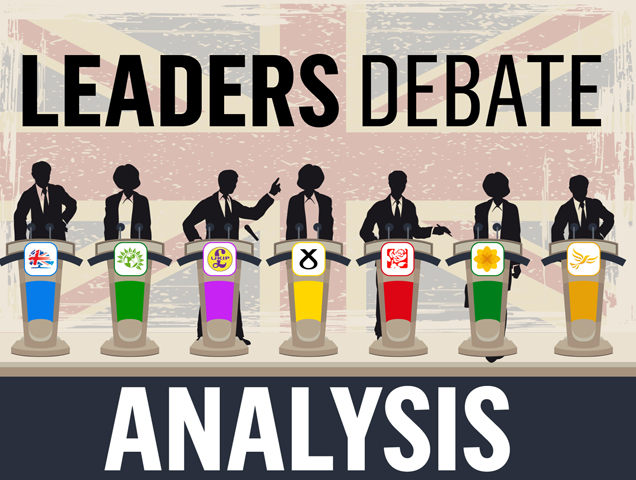Dr Malcolm Harvey is a Research Fellow at the Centre on Constitutional Change and based at the University of Aberdeen
Tonight’s televised leadership debate emphasised the changing nature of UK politics.
After prolonged negotiations over who to include, the electorate had the opportunity to compare the policies of seven parties who hope to be in a position to influence policy after May’s election.
Including the leaders of UKIP, the SNP, Plaid Cymru and the Green Party of England and Wales, in addition to the Conservatives, Labour and the Liberal Democrats proved a challenge for media executives, and the format resembled popular 1990s quiz show “15-to-1”.
It was, nevertheless, a useful exercise, not only to make clear the contrasting views and policies on offer from the parties standing, but to emphasise the broad spectrum of views apparent in British politics at the moment. Nigel Farage’s Euro-sceptic, anti-immigration message and complaints about “health tourism” stood in stark contrast to the pro-Europe position of Natalie Bennett’s Greens.
The SNP’s Nicola Sturgeon and Leanne Wood for Plaid set their pitch as defenders of the Scottish and Welsh interest respectively, with the former looking increasingly likely to be in a position of influence after the election.
Ed Miliband constantly made his case down the camera for a Labour government, while current incumbent David Cameron mainly tried to keep himself above the fray. Deputy PM Nick Clegg, whose Liberal Democrats appear likely to take a substantial hit at the election, had the unenviable task of differentiating his party from the unpopular policies of his coalition partners in government, but at times appeared to recapture his debate popularity from 2010.
Overall the format did not allow for incisive analysis of particular issues or policies to any great degree. But it did provide evidence of one thing: the multi-party system of politics which the devolved legislatures have experienced since 1999 looks to be here to stay at Westminster too.
